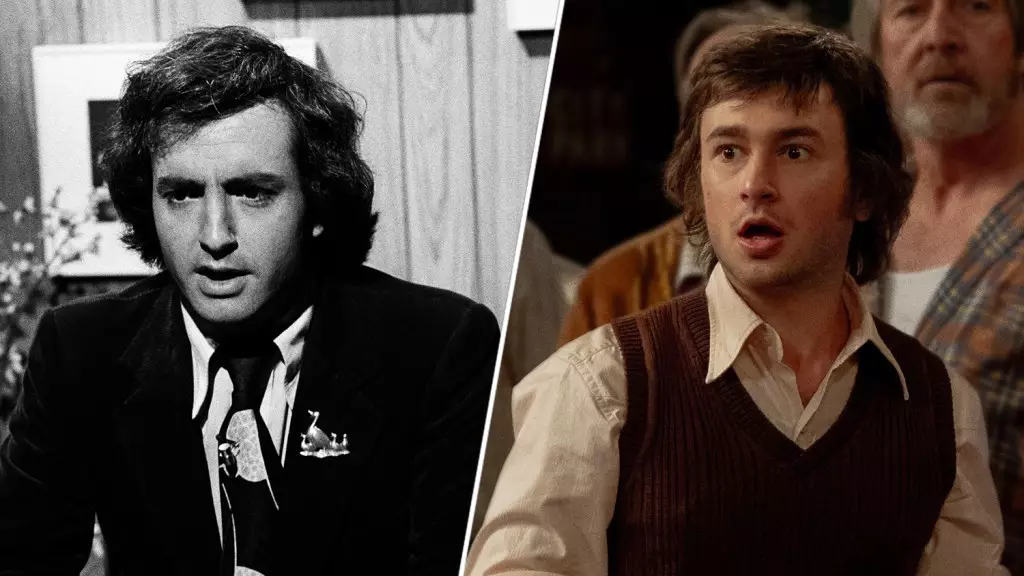In the realm of comedy, few shows hold a place as iconic as Saturday Night Live (SNL). Since its debut on October 11, 1975, it has transformed comedy and television, giving rise to countless comedic legends. In the film “Saturday Night,” which chronicles the behind-the-scenes frenzy of that inaugural episode, the cast dives into a story rich with humor, heart, and a glimpse of the creative chaos that defines live television.
For actor Gabriel LaBelle, portraying Lorne Michaels in “Saturday Night” was not just about fitting into a role; it was about immersing himself in the world that Michaels created. LaBelle’s recount of his visit to 30 Rockefeller Plaza, where the original SNL blossomed, adds an authentic layer to his performance. During his time in New York, LaBelle had the opportunity to witness a live taping of the show and had a brief encounter with the mastermind behind it all, Lorne Michaels.
LaBelle expressed his excitement about being present during a live SNL episode featuring Josh Brolin, where he observed first-hand the energy and spontaneity characteristic of the show. More than just a fan experience, this insight allowed LaBelle to channel the essence of Michaels as he prepared for the film. His interactions with not only Michaels but also other significant players in the world of SNL, like Scarlett Johansson and director Jason Reitman, hint at a camaraderie that underscores the film’s authenticity.
“Saturday Night” does more than just present a narrative about a television show; it delves into the birth of an artistic endeavor that continually sought to challenge the status quo. Initially titled “SNL 1975,” the film is grounded in historical accuracy yet vibrantly brings to life the creative turmoil among a group of innovative comedians and writers. The narrative spans the intense moments leading to SNL’s live premiere, showcasing the chaos, laughter, and human connections that forged a television landmark.
The film’s setting is hugely significant. The 1970s was a decade filled with political upheaval and cultural shifts, and SNL emerged as a voice of dissent, humor, and unpredictability. Such a framework gives the film context and depth, reflecting how those turbulent times were ripe for innovative comedic expression. By exploring the tensions and triumphs behind the scenes, audiences are allowed to appreciate the raw determination and ingenuity that fueled the show’s creation.
There’s often an enigmatic nature surrounding figures like Lorne Michaels, and speculation abounds regarding his thoughts on portrayals such as LaBelle’s. While it remains uncertain if Michaels has viewed the film, insights from conversations between Reitman and Michaels indicate a complex relationship of admiration and mystery. Michaels’ cryptic communication style hints at a deeper layer of understanding about the sensitivity of depicting real-life figures in entertainment.
For LaBelle, the anticipation of Michaels’ reaction to his portrayal adds a layer of suspense reminiscent of the show itself. The enigmatic presence of Michaels serves as both a challenge and inspiration to the cast and crew. Art often imitates life, and in this case, the interpretive dance between actor and subject reflects the essence of SNL, where surprises abound, and every moment holds potential for laughter—or introspection.
“Saturday Night” encapsulates a time when comedy was on the brink of revolutionary change. Through LaBelle’s portrayal and the ensemble cast’s dedication, the film aspires not only to craft a captivating narrative but also to honor the legacy of SNL—a show that has not only survived but thrived through decades of cultural evolution. As audiences prepare for its nationwide premiere on October 11, they will undoubtedly find themselves drawn into the historical reverberations of laughter, challenges, and the unlikely friendships that flourished behind that fateful first episode. As “Saturday Night” takes its place in the pantheon of comedy films, it stands as a tribute to a groundbreaking era that forever altered the landscape of television and American humor.

